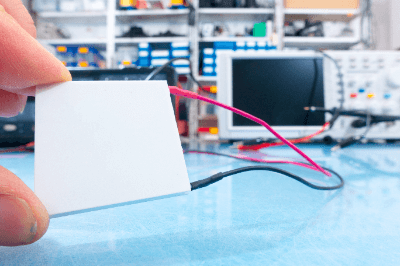What Is a Thermoelectric Cooler?

A thermoelectric cooler is a cooling device that uses thermo-modules, also called electronic cooling devices, or so-called Peltier devices, to lower temperatures electrically. The heat is transferred from one metal to the other by passing an electric current through the junction of the two types of metals that make up the device, and the device and the combined unit are cooled. Because of the electronic cooling, solvents such as chlorofluorocarbons are not required. The element itself can also be used for heating, so equipment using the element as a cooling/heating device can also be designed as a heating/cooling device.
Uses of Thermoelectric Coolers
Thermoelectric coolers using Peltier elements can be used for cooling CPUs inside PCs, CCD cameras, drive lock buses, etc., because the cooling mechanism can be made smaller. Cooling and heating type drive lock buses that can be cooled or heated by changing the polarity of the circuit are also available.
While the electrical cooling mechanism is superior in that it generates neither vibration nor noise, it is based simply on the principle of heat exchange, so the area around the element becomes quite hot. Therefore, heat removal control is essential for use in products.
Principle of Thermoelectric Coolers
A Peltier element created based on the Peltier theory, in which heat is transferred from one conductor to the other by passing a DC current through the junction, is used to design a current direction for cooling. The system consists of a heat sink and a fan to exhaust the transferred heat to the outside. Because the system cools simply by passing electricity through it, it does not require a special drive and can be easily miniaturized. It is also quiet because there is no compressor. Because of these characteristics, this system is used for cooling in parts where space is limited, in places where quietness is required, and in compact cooling equipment.
Note that the cooling of this system is only an application of the mechanism of thermal transition from one side to the other, and the element itself generates more heat than the transition heat, so it is necessary to be careful that the cooling efficiency is reduced if the heat removal does not go well. If the heat removal fails and the temperature becomes too high, the element itself may be damaged, so a heat exchange system is essential.